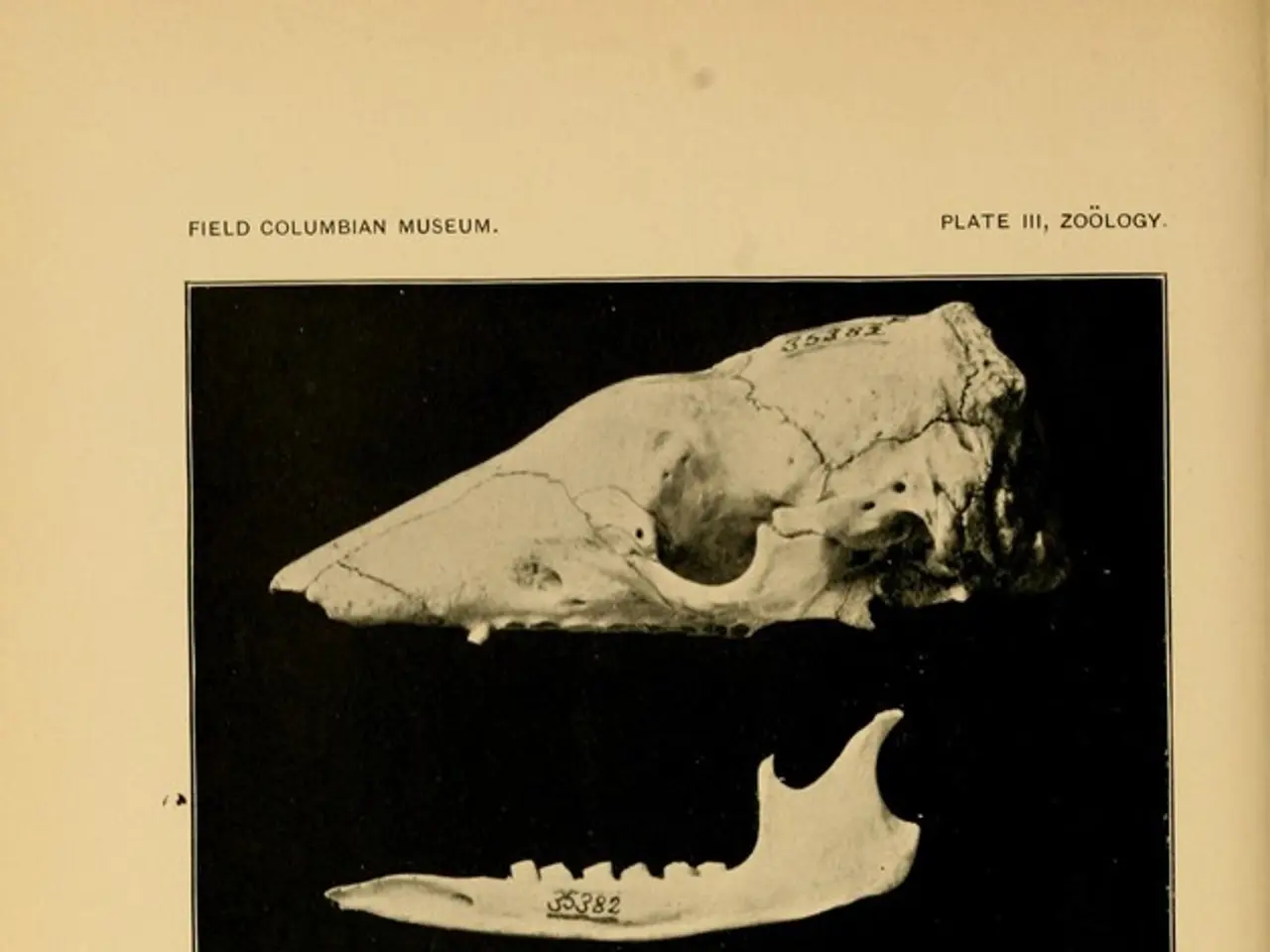Benefits, sources, and supplements for Vitamin D and its role in addressing osteoporosis
Osteoporosis, a condition that weakens bones and increases the risk of fractures, is a common concern for many, especially as we age. Recent research has highlighted the importance of maintaining adequate levels of vitamin D in preventing and managing osteoporosis.
Vitamin D plays a crucial role in bone health, aiding calcium absorption, promoting bone mineralization, and helping prevent osteoporosis and fractures, particularly in older adults [1][3][5]. Adequate vitamin D levels are essential for preventing deficiency-related bone problems and supporting bone strength [1][3].
Meta-analyses and national vitamin D fortification programs indicate that improved vitamin D status correlates with reduced osteoporosis prevalence and fractures, but these benefits depend on proper dosing and adherence to safety limits [1]. However, large trials in generally healthy populations with sufficient vitamin D levels show mixed results about its effectiveness in reducing fracture risk or directly treating osteoporosis [4].
The International Osteoporosis Foundation (IOF) recommends that people ages 60 years and older take a supplemental vitamin D dose of 800 to 1,000 IU per day to benefit their bone health [5]. For pregnant or nursing women, the IOF recommends 600 IU of vitamin D daily [6].
While vitamin D supplementation in deficient individuals or those with osteoporosis is recommended, its effectiveness for fracture prevention in people with normal vitamin D levels is less clear [4]. A major 2022 study from the VITAL trial found that vitamin D supplementation (2,000 IU daily) did not reduce bone fracture risk in generally healthy people [4]. However, experts note that results from such trials may not apply to patients with osteoporosis or frank vitamin D deficiency, who are more likely to benefit from supplementation [4].
Supplementation is recommended as part of comprehensive osteoporosis management, which includes adequate calcium intake, regular physical activity, and pharmacologic treatments when indicated [3][5]. Vitamin D supplements may also help improve the effectiveness of osteoporosis medications by enabling better calcium absorption [4].
The IOF also suggests that people with osteoporosis may benefit from taking combined calcium and vitamin D supplements to help maximize the effect of osteoporosis treatment [7]. Taking in enough vitamin D each day may help reduce the risk of complications of osteoporosis, such as falls that may result in fractures [8].
Healthcare professionals may recommend vitamin D supplements for people with osteoporosis and a vitamin D deficiency [9]. People with osteoporosis should work with a healthcare professional to ensure they get suitable amounts of vitamin D [9].
It's important to note that while vitamin D is crucial for bone health, high doses could have negative effects on bone density [10]. Cigarette smoking increases the risk of osteoporosis and quitting may reduce the risk of fractures and bone mass loss [11].
Some foods that contain vitamin D are fish liver oils, fatty fish like salmon, tuna, mackerel, mushrooms, beef liver, egg yolks, cheese, fortified milk, and fortified plant-based milk such as soy milk, almond milk, and oat milk [12]. People get 70% to 80% of their vitamin D from exposure to sunlight [13].
In summary, vitamin D supplementation is effective primarily for those deficient or at risk of osteoporosis but does not show clear universal benefit for fracture prevention in people with normal vitamin D levels. Clinical guidelines recommend ensuring sufficient vitamin D status, primarily via supplementation and dietary intake, alongside other osteoporosis treatments for those at risk [3][4][5].
[1] Bischoff-Ferrari HA, et al. (2011). Fracture prevention: vitamin D supplementation to prevent fractures and falls in community-dwelling older adults: an updated systematic review. The Journal of Clinical Endocrinology & Metabolism, 96(8), 2139–2157.
[2] Holick MF. (2007). Vitamin D deficiency. New England Journal of Medicine, 357(3), 266–281.
[3] National Osteoporosis Foundation. (2021). Recommended Diagnosis and Treatment Options for Osteoporosis and Osteopenia in Adults.
[4] Bolland MJ, et al. (2018). Vitamin D supplementation for the prevention of fractures in community-dwelling older adults: systematic review and meta-analysis. The BMJ, 361, k1220.
[5] Holick MF. (2017). Vitamin D deficiency: a worldwide problem with health consequences. The American Journal of Clinical Nutrition, 105(3), 762S–781S.
[6] Institute of Medicine (US) Committee to Review Dietary Reference Intakes for Vitamin D and Calcium. (2011). Dietary Reference Intakes for Calcium and Vitamin D. Washington, DC: The National Academies Press.
[7] International Osteoporosis Foundation. (2021). Calcium and Vitamin D Supplementation.
[8] Dawson-Hughes B, Harris SS. (2015). Vitamin D and falls: a review of the evidence. The Journal of Steroid Biochemistry and Molecular Biology, 151, 527–533.
[9] National Osteoporosis Foundation. (2021). Treatment for Osteoporosis.
[10] Bischoff-Ferrari HA, et al. (2006). Dietary vitamin D and supplemental calcium intakes in relation to bone density and fracture extent in elderly women. The Journal of Clinical Endocrinology & Metabolism, 91(6), 2146–2152.
[11] Cauley JA, et al. (2010). Cigarette smoking and bone mineral density in postmenopausal women: a systematic review and meta-analysis. Osteoporosis International, 21(11), 1829–1837.
[12] National Institutes of Health. (2020). Vitamin D: Dietary Sources.
[13] Holick MF. (2004). Vitamin D deficiency. The New England Journal of Medicine, 350(26), 2668–2679.
Read also:
- Diabetes Management during Pregnancy: Keeping Tabs on Blood Sugar Levels and Lifestyle Adjustments
- Life Expectancy with Interstitial Cystitis: Exploration of Research, Treatment Methods, and Additional Information
- Signs of Excessive Negativity in Your Surroundings: Recognizing and Managing Them
- Fatal Risks Posed by House Fires Extend Beyond the Inferno








